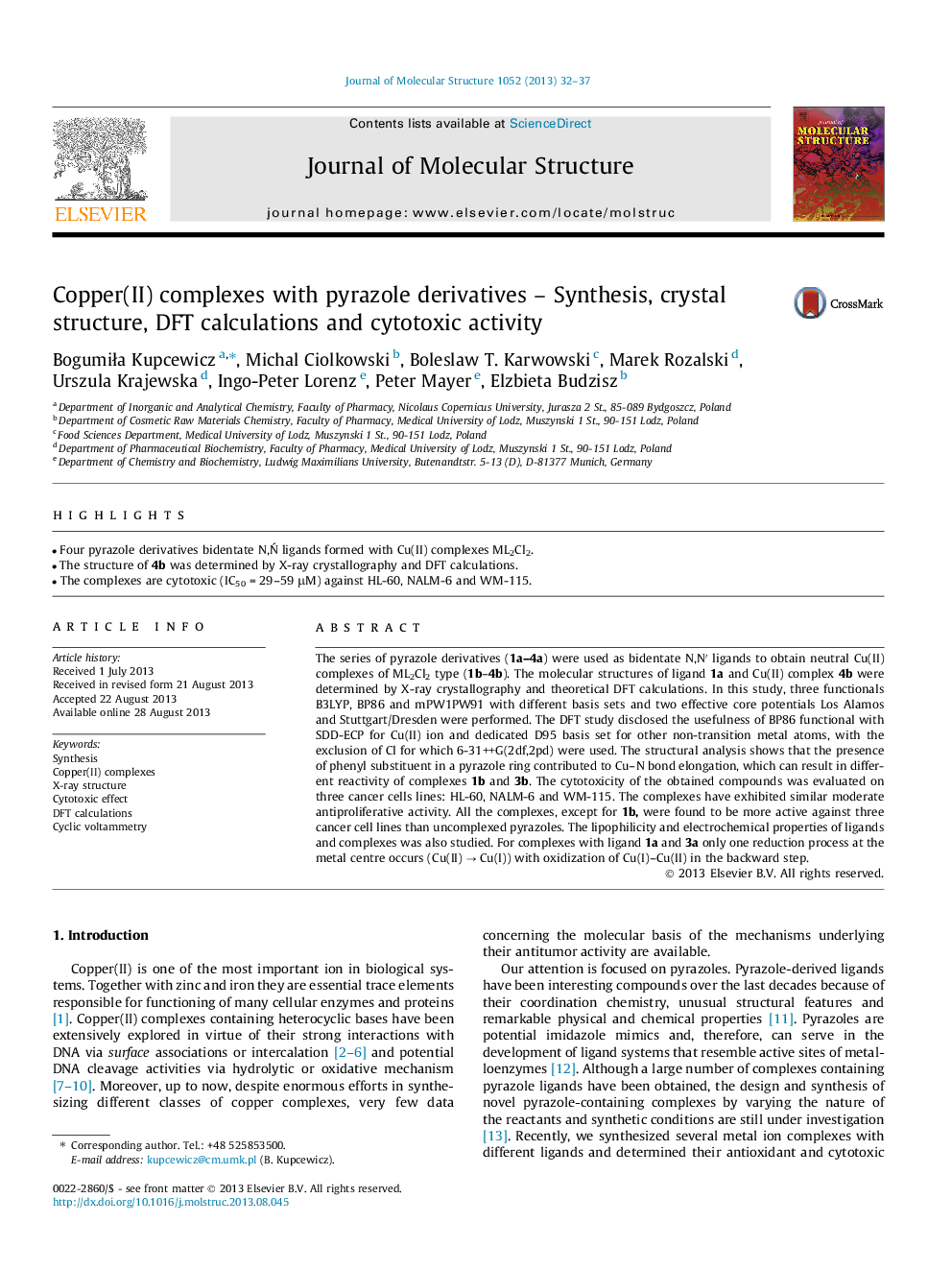| کد مقاله | کد نشریه | سال انتشار | مقاله انگلیسی | نسخه تمام متن |
|---|---|---|---|---|
| 1402849 | 1501762 | 2013 | 6 صفحه PDF | دانلود رایگان |

• Four pyrazole derivatives bidentate N,Ń ligands formed with Cu(II) complexes ML2Cl2.
• The structure of 4b was determined by X-ray crystallography and DFT calculations.
• The complexes are cytotoxic (IC50 = 29–59 μM) against HL-60, NALM-6 and WM-115.
The series of pyrazole derivatives (1a–4a) were used as bidentate N,N′ ligands to obtain neutral Cu(II) complexes of ML2Cl2 type (1b–4b). The molecular structures of ligand 1a and Cu(II) complex 4b were determined by X-ray crystallography and theoretical DFT calculations. In this study, three functionals B3LYP, BP86 and mPW1PW91 with different basis sets and two effective core potentials Los Alamos and Stuttgart/Dresden were performed. The DFT study disclosed the usefulness of BP86 functional with SDD-ECP for Cu(II) ion and dedicated D95 basis set for other non-transition metal atoms, with the exclusion of Cl for which 6-31++G(2df,2pd) were used. The structural analysis shows that the presence of phenyl substituent in a pyrazole ring contributed to Cu–N bond elongation, which can result in different reactivity of complexes 1b and 3b. The cytotoxicity of the obtained compounds was evaluated on three cancer cells lines: HL-60, NALM-6 and WM-115. The complexes have exhibited similar moderate antiproliferative activity. All the complexes, except for 1b, were found to be more active against three cancer cell lines than uncomplexed pyrazoles. The lipophilicity and electrochemical properties of ligands and complexes was also studied. For complexes with ligand 1a and 3a only one reduction process at the metal centre occurs (Cu(II) → Cu(I)) with oxidization of Cu(I)–Cu(II) in the backward step.
Journal: Journal of Molecular Structure - Volume 1052, 25 November 2013, Pages 32–37